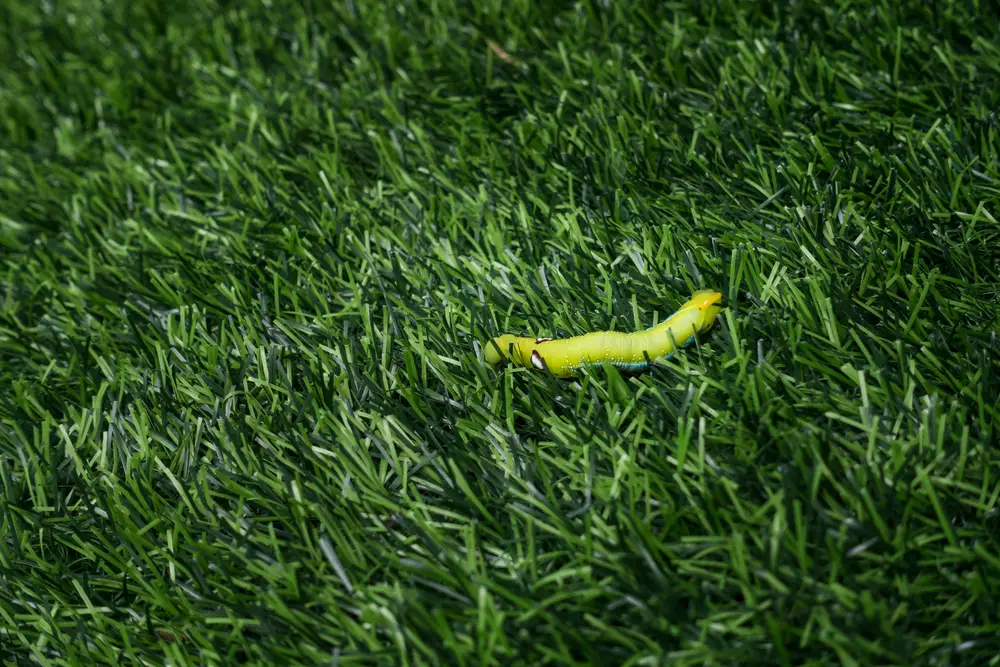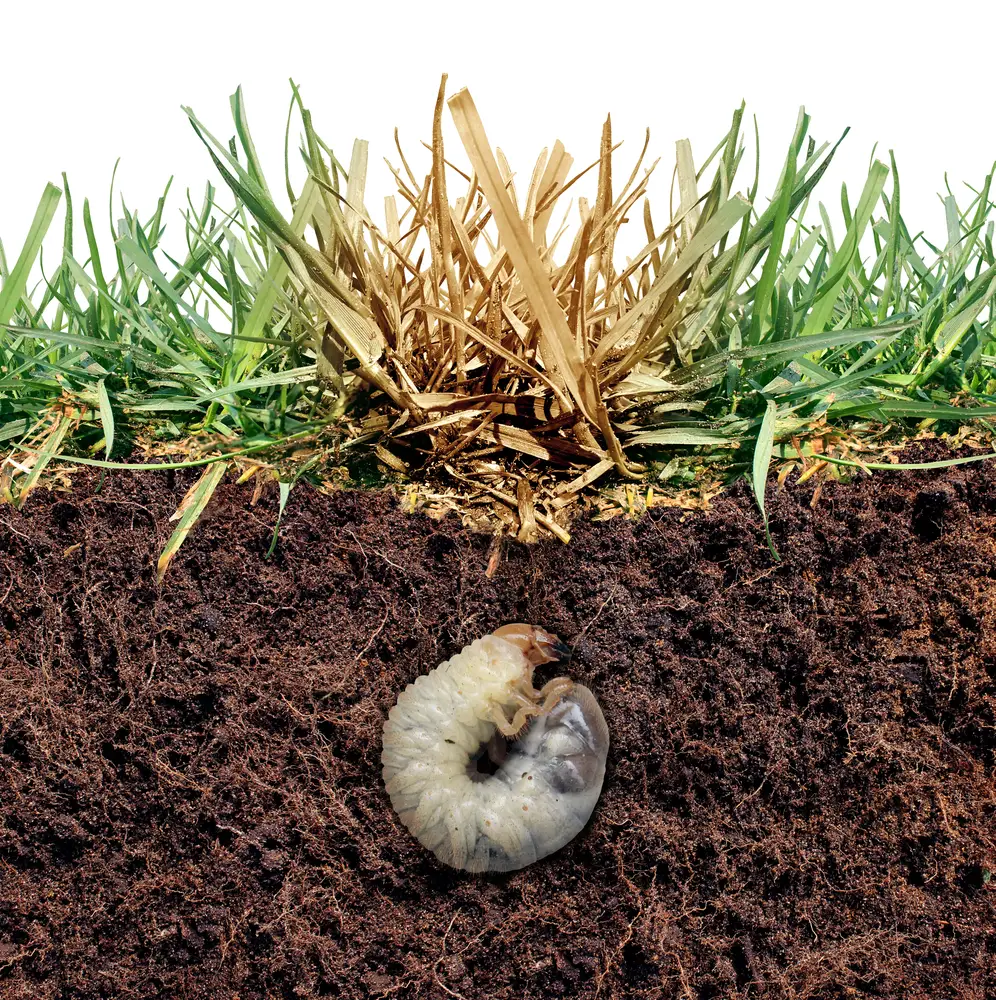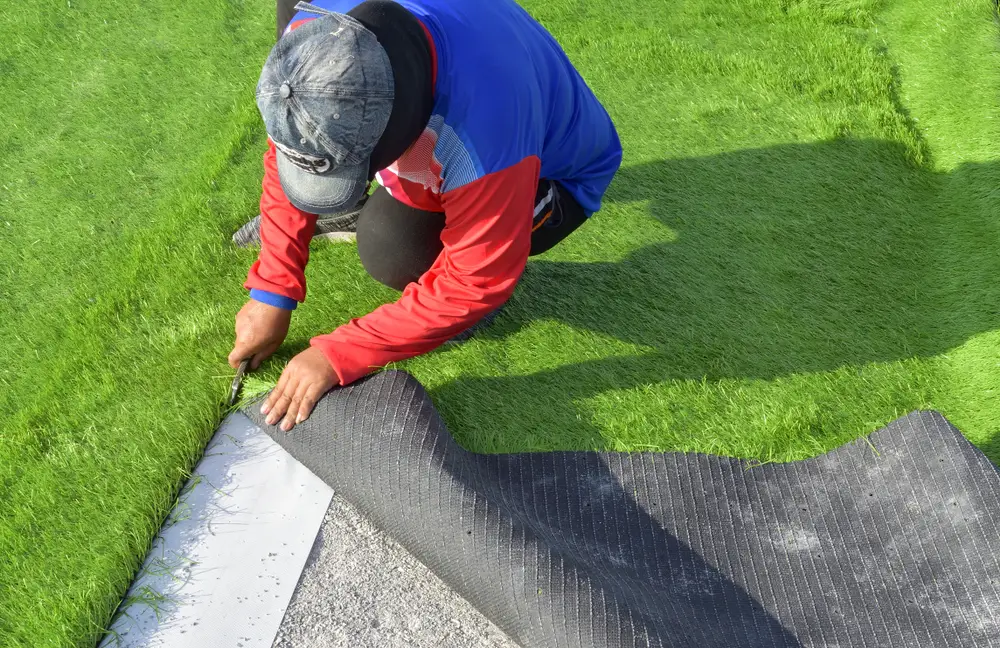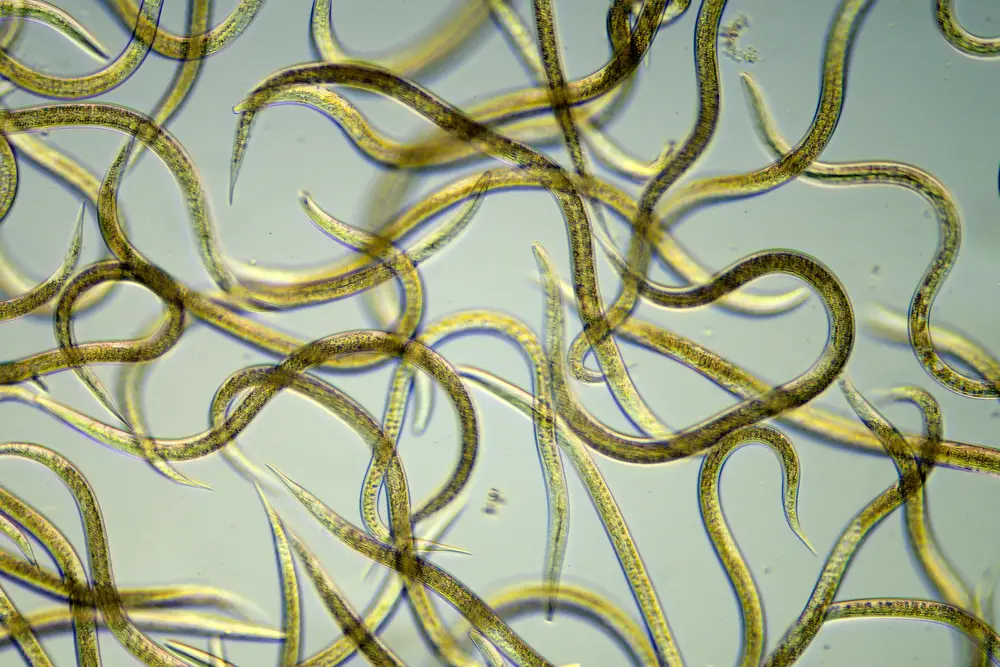For many homeowners, their lawn is crawling with bugs. While having some bugs in your garden is natural, many homeowners struggle with pest infestations in their grass. Due to this, people have wondered whether artificial grass also attracts insects. Can artificial grass deal with insects attracted to natural grass?
Artificial grass does not attract insects as it cannot provide them with food, water, or soil. There is no organic matter for bugs to feed on with fake grass, standing water is effectively reduced, and access to soil is restricted; this causes insects to find new water, food, and soil sources.
If you want a more comprehensive understanding of why insects aren’t attracted to artificial turf, we need to consider the design of this manufactured grass and how it functions. Doing this will also reveal the suitability of using artificial grass to effectively deal with insects in your garden! We will also discuss the cons of using artificial grass and finally we will discuss alternatives to yard pest control.
Are Insects Attracted To Artificial Grass?

Countless insects are attracted to grass. From ants to worms – and every insect in between – these bugs are attracted to the food, water, and shelter supplied by grass. While it’s normal to have pests on your lawn, many homeowners struggle with pest infestations on their lawn.
Many lawn insects are known to kill grass, which can leave your grass in bad condition. Due to this, many homeowners have wondered whether acritical grass will be a solution to this problem. To answer this question, we need to consider whether insects and pests are attracted to artificial grass.
Let’s consider why insects and pests are attracted to your lawn to address this. Overall, there are three main reasons you’ll find insects in your grass: water, food, and shelter. Water is supplied by standing water, while the pests feed on plant materials. Finally, the soil shelters bugs, particularly pests and rodents that burrow underground.
With fake turf installed in your garden, you effectively eliminate these elements. Artificial turf is not able to provide insects with food or shelter. It also prevents water from accumulating. Ultimately, this means that pests, insects, and rodents are not attracted to artificial grass.
Why Insects Are Not Attracted To Artificial Grass
As we explained above, there are three main reasons bugs are attracted to grass. Of course, natural grass provides insects with water, food, and shelter. With artificial grass, each of these elements is eliminated. By looking at each element individually, you’ll better understand why insects and rodents aren’t attracted to artificial grass.
Artificial Grass Limits Food Supply
First, let’s consider the way artificial grass limits the food supply of insects and pests attracted to grass. Natural grass is a fantastic source of plant material, so insects are often attracted to grass. However, artificial grass greatly reduces the amount of food available to insects.
In any garden, grass usually takes up a large amount of space. Due to this, by replacing natural grass with an artificial variant, you remove a large food source, forcing insects to find new food sources. This leads us into the issue of soil in regards to attracting insects.
Artificial Grass Limits Access To Soil

Many insects use soil to feed, making soil another way insects use natural grass as a food source. Of course, natural grass provides insects with easy access to your soil. Some insects even live in and lay eggs in your soil, contributing to lawn infestations. Moths, ants, beetles, and mites all lay eggs in your yard’s soil.
However, with manufactured grass, homeowners can limit access to the soil through the mesh barrier, an important reason why insects aren’t attracted to artificial grass. If you struggle with burrowing rodents, such as moles, artificial grass will also help in this regard, preventing rodents from burrowing into the soil.
Artificial Grass Reduces Standing Water
In addition to food and shelter, pests require water to stand. Not only can natural grass provide water to pests, but standing water can even attract more insects. For instance, mosquitos are notoriously attracted to standing water. Many lawns will have low spots where water can collect and attract bugs.
However, artificial grass will assist in leveling out your yard, which will reduce low areas where standing water can collect. Furthermore, fake grass does not collect moisture, which helps in repelling insects. Your artificial grass becomes inhospitable to pests by preventing moisture and standing water.
Can Artificial Grass Be Used As Pest Control?
When the grass in your lawn attracts insects and pests, it can be hard just to enjoy your lawn, patio or garden. Many homeowners have tried using solutions like bug spray, bug zappers, mosquito nets, and insect-repellent candles. However, these solutions are often ineffective in reducing the amounts of insects in your yard.
Many of these methods can even be detrimental to the ecosystem in your region. After all, many bugs play an important ecological role. Due to this, homeowners should use more targeted methods of dealing with insects and pests, as this will help to prevent further disruption to your yard’s ecosystem.
Luckily, artificial grass is the perfect method of dealing with insects and pests in your garden. As we explained in the previous section, artificial grass removes the food, water, and shelter that your grass had been supplying to the insects it housed.
By installing artificial turf in your garden, you can effectively prevent insects from being attracted to your lawn. Ultimately, installing artificial grass is a means of redirecting insects elsewhere. This method is an eco-friendlier way of dealing with insects – especially when compared to other pest control methods, such as bug zappers and pesticides.
What Are Some Negatives Of Using Artificial Grass?
We don’t want to project an image that everything is bright and green when you choose to purchase an artificial lawn. Although, pest control is certainly a big plus in artificial lawn’s favor, there are some negatives about an artificial lawn that you should strongly consider.
Artificial Grass Is Not Self-Repairing

One consequence of using artificial grass is that it is not self-repairing. If you drop some hot charcoal or your child runs in cleats through your natural grass yard your natural grass will be damaged. However, this likely won’t require any work from you as new grass will sprout up and replace the damaged grass.
Artifical grass can also be damaged, however, it will subsequently need to be repaired by the homeowner in order to restore any damaged areas. This can prove to be an annoying problem for families with young children playing in the yard frequently.
One way to reduce this concern is to purchase highly durable types of artificial turf. Artificial turf is typically made out of (i) Nylon, (ii) Polyethylene, or (iii) Polypropylene. Nylon is the most durable and will bounce back into shape after years of heavy foot traffic. It will also withstand consistently high temperatures for homeowners that live in the Sun Belt. Be forewarned, however, Nylon is by far the most expensive type of artificial grass. You will typically find it sold for no less than $5.00 a square foot.
Artificial Grass Can Harm The Resale of Your Home
Artificial Grass is extremely popular among some homeowners, however, there are also many homeowners that strongly prefer a real natural grass lawn. Installers typically remove any natural grass before installing the artificial lawn so anyone who wants to convert their lawn to natural grass will have to re-seed and consistently water the barren lawn for weeks (if they are lucky) before they can see a repopulated natural grass lawn take shape.
On the otherhand, an artificial grass lawn might prove to be a net-neutral when you also consider that some homeowners will prefer the low maintenance that comes with it, but just be aware that in a more challenging housing market, an artificial lawn may turn some people away.
Artificial Grass Does Require Upkeep
Overall, you will likely find that your artificial lawn requires less upkeep than your natural lawn. However, there are a few caveats to this general rule. When your dog or cat goes to the bathroom in your natural lawn, your first instinct likely is not to go get gloves, a bag, and a hose so you can wash any urine away and pick up the poop. However, this is an absolute necessity with an artificial lawn. In order to maintain hygiene and the appearance of your artificial lawn, you will need to hose spray the lawn down from time to time to remove debris and prevent stains.
What Are Some Pest Prevention Alternatives To Artificial Grass?
Artificial grass is not the only pest control option out there. Check out a few alternatives to artificial grass below:
Pesticides Will Control Lawn Pests
Pesticides are the go-to for many homeowners and for good reason – they are very good at killing lawn pests and all sorts of them. They are readily available in local stores, and they are a low cost and low time-consumption option.
There are some pretty serious negatives to pesticides however. One being that they tend to vastly overkill. Instead of just killing off the bugs that commonly fall under the category of “lawn pest”, pesticides will often kill a variety of organisms in your lawn. This can have a mjor impact on the local ecosystem and can lead to unintended consequences.
Some pesticides have also been linked to harm in humans and pets, so it is important to do your research before you consider purchasing a particular pesticide.
Nematodes Are A Great Pest Control Option

Nematodes are an interesting and more natural method to fight lawn pests. Nematodes are invisible to the eye but don’t worry, although they might be microscopic they can pack a mean punch against lawn pests!
Nematodes can be purchased online or in your local garden stores and they are an extremely effective solution to fighting off grubs. Basically, nematodes feed on the larvae of below-ground insects. They also use the larvae to lay eggs and will continually multiply until the pest food supply in your yard runs dry.
Nematodes are harmless to humans and animals, and they will not harm the plants in your garden or grass.
There are some negatives to be aware of when considering nematodes. First and foremost they are not a full-blown guaranteed solution and it is often difficult to measure how effective they are. If you dig some holes in your lawn you might find some brown and dry grub larvae, which means that the nematodes got to the larvae, but it is still difficult to ascertain whether the nematodes were successful in getting most of the grubs.
In addition because nematodes are live organisms there are additional measures that you need to take for the nematodes to be effective:
- Nematodes should typically only be applied in the Spring or Fall, Winter is too cold for nematodes and they will die.
- Nematodes need to be refrigerated until you are ready to apply them to the lawn, otherwise they will die.
- There are different species of nematodes and they will target different pests. Be sure to double-check which nematodes a particular vendor is trying to sell you and which pests they will target.
Conclusion
Insects and rodents are attracted to natural grass because it provides water, food, and shelter. However, due to the design of artificial grass, these conditions are eliminated and your lawn pests will be significantly reduced with an artificial lawn. Insects are not attracted to artificial turf because it cannot provide them with a stable water source, organic materials, and soil for shelter. This design makes artificial grass a great option for reducing insects in your garden!
If you decide that the negatives outweigh the positives in an artificial garden, you can consider some pest-control alternatives. Some of the most popular options include (i) pesticides or (ii) nematodes.